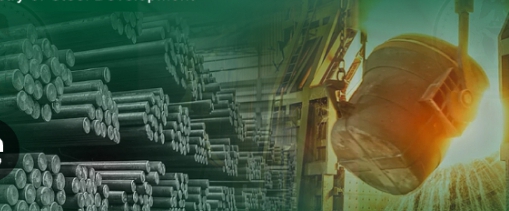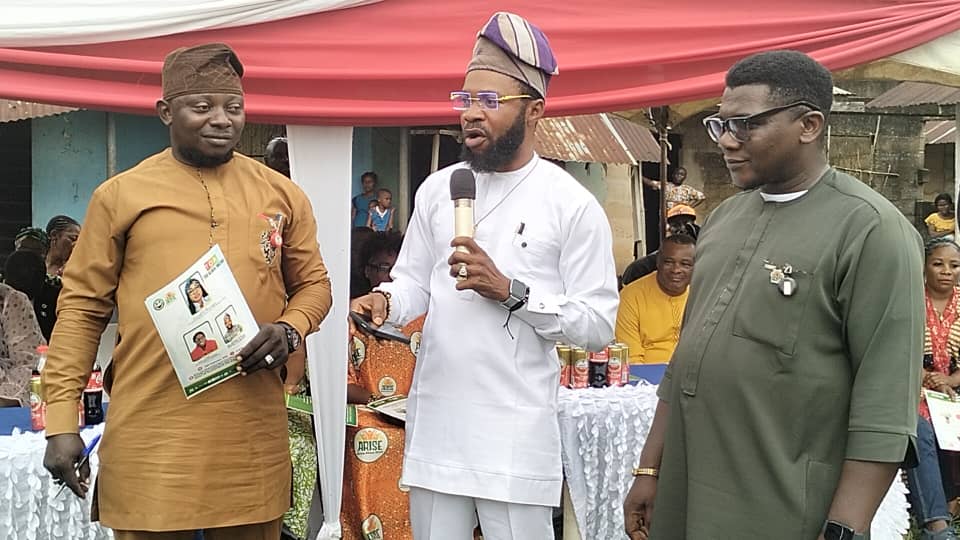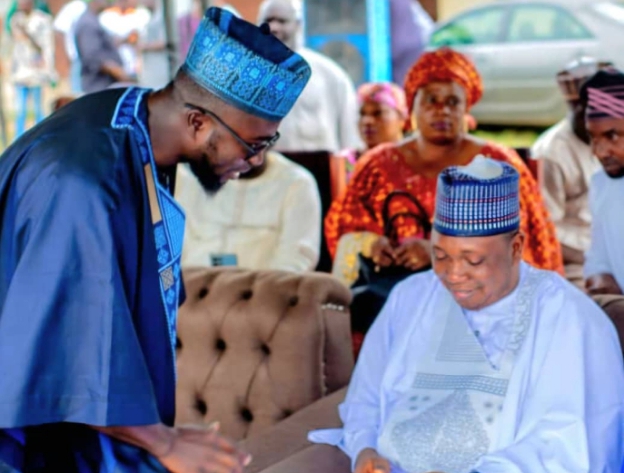In the annals of Nigeria’s industrial ambition, few projects symbolise both promise and frustration as vividly as the nation’s long-running quest to build a domestic steel industry.
In the first part of this article we gave the background of steel development in Nigeria where we showed that planning for the Nigeria steel industry started around 1958. The starting point was to conduct geological and market surveys.
The need to have a steel industry in Nigeria was also predicated on the availability of raw materials such as iron ore, limestone and coal. Iron ore was located at Itakpe, Ajabanoko, Ogbaja, Ikepom and other places while limestone at Jakura and Nkalagu and Calabar. The large deposits of coal were found in Enugu, Lafia and other parts of Nigeria.
Based on honest, positive and transparent technical input to the feasibility report, the then USSR was considered a suitable technical partner and was initially awarded the turnkey contract to design and build the plant. A job they carried out to 98% completion despite concerted malevolent interference from rival western power blocks, that resulted in a significant disruption to the smooth and timely completion of the project.
About same time, the steel plant at Ovwian/Aladja (Delta Steel Company Ltd) DSC was commissioned to produce steel from imported iron ore and local steel scrap. DSC at a point had taken super-concentrate from National Iron Ore Manufacturing Company (NIOMCO), Itakpe to do away with importation of feed stock. The plant, however later became unable to operate optimally due to a multiplicity inter-play of factors, including ministerial strangle-hold, under-funding, Government mismanagement, gross underestimation of the magnitude of the inherent issues and (or) lack of forward planning towards government-owned enterprises.
With the collapse of DSC came the paralysis of the inland (Jos, Katsina and Oshogbo) steel rolling mills. Interestingly, in all these, the overall genuine intention
and strategy of Government remains mysteriously unclear or deliberately undefined.
Today, steel programme sits once again in the spotlight of the nation’s economic development. The Federal Ministry of Steel Development, revived in 2023, and headed by Minister of Steel Development, Prince Shuaibu Abubakar Audu, has been making bold declarations, signing agreements, touring dormant plants, and drafting roadmaps. For the first time in decades, there appears to be coordinated effort aimed at turning Nigeria’s dream of self-sufficiency in steel into reality.
However, where do things really stand? What has been achieved? What still lies ahead? This feature takes stock of the Nigerian Steel Development Programme as it enters a critical phase in 2025.
Ajaokuta: Still the Centrepiece
At the heart of the programme remains the Ajaokuta Steel Complex (ASCL) in Kogi State, often called the “bedrock of Nigeria’s industrialisation.” Conceived in the 1970s and built to 98 percent completion by the late 1980s, Ajaokuta was designed to produce 5.2 million tonnes of steel annually and feed downstream industries from shipbuilding, car manufacturing to construction.
For decades, however, ASCL has been a textbook example of project failure: International Conspiracy, Incomplete Facilities, Abandoned Equipment, Unwarranted Legal Wranglings, Political Controversies and Endless Financial Drainpipe for corrupt leaders.
Now headed by Professor Nasir Naeem, the management of ASCL is reigniting hope by announcing a memorandum of understanding with foreign engineering partners, including Russian specialists familiar with the plant’s Soviet-era design. Technical teams have since assessed the plant, identifying priority rehabilitation works, but full audit report of the facility is yet to be released.
However, the government now speaks openly of phased commissioning, beginning with units that can be activated at lower cost while preparing the larger blast furnaces for operation. During one of his tours of the facility Minister of Steel Development, Prince Shuaibu Abubakar Audu, said, “This government is committed to seeing Ajaokuta finally come on stream. We are moving beyond rhetoric to action.
Itakpe: Ensuring Raw Materials
No steel plant can run without local raw materials. That is why the National Iron Ore Mining Company (NIOMCO) at Itakpe, also in Kogi State, has been named a priority twin project. NIOMCO was designed to supply Ajaokuta with iron ore super concentrate, ensuring Nigeria’s steel industry rests on a secure domestic resource base.
For years, NIOMCO lay moribund, producing little and struggling with obroken-down equipment. The government has now placed its rehabilitation at the centre of the roadmap. Experts posit that reviving Ajaokuta without restoring NIOMCO and linking both factories with effective transportation system would only perpetuate import dependence, making the steel sector financially unsustainable. Mining is the beginning of the steel story. If NIOMCO works, Ajaokuta can be fed. Without Itakpe, we’ll just be importing billets and rolling them. That’s not real steelmaking.
The Delta Steel Question
Another major asset under review is the Delta Steel Complex at Aladja, now known as Premium Steel & Mines Ltd after privatisation. Once the largest integrated steel plant in West Africa, Delta Steel was supposed to complement Ajaokuta. Instead, it has been mired in controversy, shifting ownership, and limited production output.
In 2024, parliamentary probes reignited debates over how the plant was sold, with some lawmakers calling for a forensic review of the privatisation. The Ministry of Steel Development has nonetheless included Delta Steel in its revival tour, signalling that the plant will have a role in Nigeria’s broader industrialisation drive. The controversy underscores a persistent challenge on how to attract investment and ensure transparency while untangling decades of mismanagement.
A Roadmap for Ten Million Tonnes
Perhaps the most significant policy innovation in the steel industry is the ten-year roadmap unveiled by the Ministry in 2024. The document outlines an ambitious target: to scale Nigeria’s steel output toward 10 million tonnes per annum within a decade. The roadmap envisions a mix of government-backed rehabilitation of legacy plants and new private sector investments, particularly in direct reduction iron (DRI) and electric arc furnace technologies that can be quicker to deploy. Fiscal incentives, tax breaks, and infrastructure support are part of the package to lure investors into the sector.
Nigeria’s annual steel consumption already exceeds 20 million tonnes, with billions of dollars spent yearly on imports of steel products ranging from iron bars to flat sheets. Bridging that gap through domestic production, is not just an economic imperative but also a national security necessity.
Signs of Momentum
Unlike in previous decades, there are genuine signals that the government means business this time. This is demonstrated through Foreign Partnerships Engagement of Russians, Indians, and other foreign technical experts by the government. Regular site visits, media briefings, and the release of progress updates have also created visibility and accountability. Several Nigerian conglomerates and foreign firms have expressed tentative interest in investing, provided financing and governance risks are addressed.
This is the most serious push in a long time. However, seriousness alone doesn’t guarantee success. It must be matched with financing, project discipline, and transparency. Government has no option but to take the initial leading role to get things done right in this critical sector of the nation’s economy.
Persistent Bottlenecks
Despite the renewed drive, enormous challenges remain, some of which includes Capital Shortage, (Resuscitating Ajaokuta will require huge financial investment in foreign currencies), Technical Complexity, Restarting mothballed plants is far harder than starting afresh. Equipment is outdated, some parts are missing, and integration risks are high, infrastructure gaps (Steel requires reliable power, efficient railways, and port access).
Nigeria still struggles with erratic electricity supply and congested transport systems. Governance issues, (Past corruption, opaque sales, and inconsistent policies have scarred investor confidence). Unless transparency improves, new money may be reluctant to flow in.
Why Steell Matters
Why pursue steel revival in an age when countries can simply import cheaper products from Asia? Several arguments. First reason is to achieve job creation. A functional steel sector could create hundreds of thousands of direct and indirect jobs. Secondly to create industrial backbone. From bridges to vehicles and machine tools, steel is indispensable to the economy of any nation. No country achieves broad industrialisation without a solid steel base. Then comes the issue of foreign exchange savings. Nigeria spends billions annually importing steel. Domestic production would ease pressure on foreign reserves. Steel is needed for strategic reasons for any economy. Relying on imports for such a critical material is risky, especially during global supply chain disruptions.
Advise to Government
Some Economic Experts advise the Nigerian Government to adopt a phased approach rather than chase a “big bang” revival route. This is typical of IMF and World Bank position that spelled doom to our economy during Structural Adjustment Era in the 80’s. The arguement that bringing smaller production units on line quickly may generate early revenue and build investor confidence is clever by half.
This is not the way to go when dealing with a critical industry like steel. A nation’s steel industry should not depend solely on (foreign) private investment. In as much as this may make little economic sense in the interim, the long term strategic effect of the nation is almost always seriously compromised. Steel industry in any country is a foremost government responsibility. A study of the history of steel development of all industrialized countries reveals a pattern of build-operate-sustain-stabilize-privatize.
This is what the Russians proposed to us in the 70’s and we accepted to do at inception. We still have the chance of achieving a huge success by going back to where we left of two decades ago. In my opinion that is the only way to achieve a vibrant steel industry as the bedrock for industrial development of any nation. We should not allow ourselves be deceived by foreign conflicting interest any longer.
Conclusion
After 67 years of planning and attempt at execution, the Nigerian Steel Development Programme ought to have gone far beyond rhetoric to innovation. To find us still duelling on site visits, MoUs, roadmap, and policy drafting is rubbery of a nation. By 2025 and at 65 years, Nigeria ought not to be discussing financing path, but rather consolidating on investment and diversifying into specialized area of steel product delivery.
If Nigeria succeeds this time, the rewards will be transformative: reduced import dependence, thriving downstream industries, and a new era of industrialisation.
If it fails again, Ajaokuta and its peers will remain monuments of missed opportunity. The coming years will reveal whether the current momentum translates into molten steel pouring from Nigerian furnace or whether the dream remains stuck on paper.
Pius Ebong (08033138956) is a Metallurgical Engineer and a Solid Mineral Consultant



